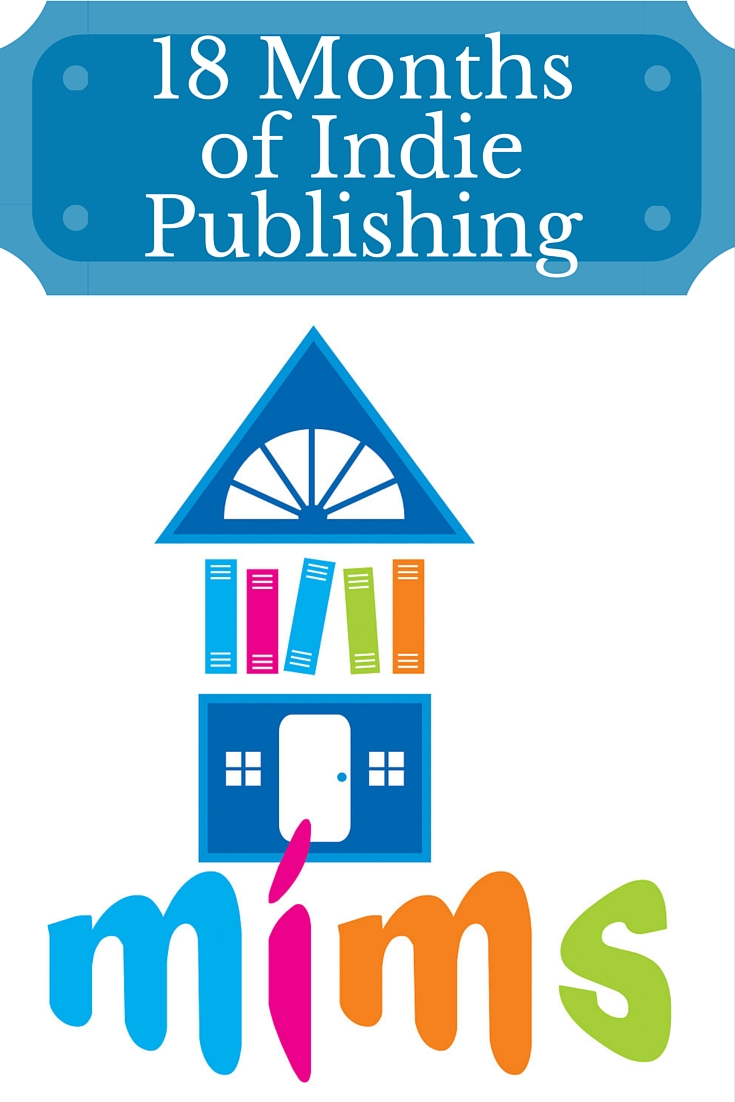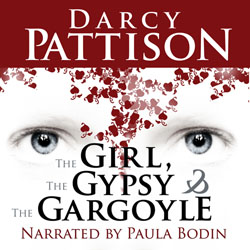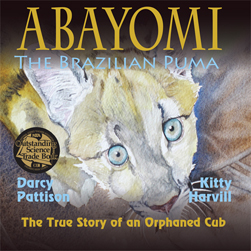About eighteen months ago, my writing career pivoted: I decided to commit to self-publishing my work. I’ve not talked about it much because I’ve been so busy being an author and publisher, but I’m going to take time to reflect on the experience and look toward the future.
WHY INDIE PUBLISH?
There are many reasons why I decided to go this direction but in the end, it’s a question of creativity. For many years, I’ve felt hobbled by the traditional publishing world because I can and do write a lot. Independent publishing offered me a chance to write and publish many titles in a short time period. It’s also offered me the possibility of creating a steady monthly income.

Setting Up an Indie Publishing Company
When I committed to funneling all of my work though my own publishing company, I had to make business choices.
What type of company? Self-proprietorship, C or S Corporation. Name of company?
Buy a domain, set up a website, open a business bank account, get a local business license, get a sales tax ID, etc. Don’t discount the business side of indie publishing; but don’t fear it, either. There’s lots of help for these business decisions. In the end, I set up MimsHouse.com — go take a look; I’m excited about this opportunity.
Then, to work! The first eighteen months have been about three things: production, distribution and accounting. I’m assuming that writing is always happening in the background, for it is, in fact, the foundation of everything else.
Accounting. I’m using QuickBooks and this is the hardest thing I do. I just keep plugging away at learning good business accounting and long for the day when I can afford an accountant.
Production. The first question to answer is formats. I decided to try every format possible: paperback, hardcover, eBooks. That sounds easy enough. Ha! It’s complicated. After 18 months, here’s my current configuration.
- Createspace.com paperback in two versions. One version is with my own ISBN and is for general distribution; a second version is with a Createspace ISBN and I only enable it for distribution to Baker and Taylor.
- LightningSource.com (NOT Lightning Spark which is the only section of the company currently open to newcomvers). I currently do paperback and hardcover books here.
- eBooks. OK, this is where it gets tricky because each platform wants a version for their proprietary platforms. Currently, you’ll find my ebooks on Kindle, iBook, Nook, Kobo and various educational publisher’s platforms.
File production for the print and ebooks varies depending on the type of book. Also, technology changes every six months or so, which means that each time I come back to produce files, I have to reevaluate previous production methods to see if they are still the best, are compatible with the current ebook and print standards, and are the most cost-effective.
- Novels that are mostly text-based or short chapter books with b/w drawings. I create the book in MSWord, making sure to be very strict on the style sheets. Word exports to print quality Adobe pdfs for printing on paper. I use Jutoh to convert these to ebooks.
- Color picture books are laid out in Adobe InDesign, which a access via a $20/month subscription; the October, 2014 update to InDesign has made export to ebooks simple. I mean VERY simple. I tried the mid-year release of Kindle Kid’s Book Creator program and found it easy to use; however, there are two main problems with it. First, it only creates the .mobi files for Kindle, and I still had to create epub files for other distributors; second, it creates a bloated file which means you have huge download costs from Kindle. At 70% royalty, they charge the publisher $0.15/MB download fee, which amounts to a “printing cost.” A file created with the Kindle Kid’s Book Creator program is easily 6-8 MB, or $0.90-$1.20 per download. You have two choices: charge a lot for the book or drop to the 35% royalty which doesn’t charge a download delivery fee.
Examples:
$2.99 at 70% payment, 8MB file
$2.99 x 70% = $2.093 – $1.20 delivery fee = $0.893/book
$2.99 at 35% payment
$2.99 x 35% = $1.0465/book (NO delivery fees at this rate)InDesign, on the other hand, takes the same book and creates files of 3-4MB.
$2.99 at 70%, 4MB file
$2.99 x 70% = $2.093 – $0.60 delivery fee = $1.493/bookMy choices, then are to profit $0.89, $1.05, or $1.49 for each eBook priced at $2.99.
InDesign’s smaller file sizes mean money in my pocket, AND flexibility in what I charge. I could drop prices to $1.99 for a sale and still make a profit of $0.79/book; it’s my choice.
Math. It runs the business and it affects production methods!
Illustrations. Another problem of production has been obtaining illustrations for my color picture books. Fortunately, the first couple books were done in a joint business arrangement with Kitty Harvill. Since then, I’ve had to find funds to pay illustrators. Behance.net has been a great place to find new illustrators. That is Adobe’s social media site for artists, where they post their portfolios. Ewa O’Neill’s debut books will be out in February; and Rich Davis, a local longtime friend and amazing illustrator, struck a deal for b/w line drawings for my short chapter series. So, I drew from friendships and from an artist’s social media site to find quality, exciting art. This has been one of the most creative and fun parts of the process, to work with some great talents to produce amazing books. I’ve learned a lot about being an art director and working with artists—it’s just fun.

AudioBooks. Amazon’s ACX program is in its infancy, but it offers authors an entre into the audiobook world. By hooking you up with a group of narrators who will audition for your book, you have control of the process and can end up with some exciting audio books. It’s hard to say which is my favorites: I love the actress Paula Bodin’s reading of my novel, The Girl, the Gypsy, and the Gargoyle; she truly brings the story to life. Monica Clark-Robinson brings her acting skills to the production of Saucy and Bubba, which is especially exciting because she’s a local actress and author. Josiah Bildner knows how to crack a joke! His narration of the Aliens Inc, Series, Book 1: Kell, the Alien shows his genius in timing of comedy.
Distribution. The third piece of the puzzle for the last eighteen months has been distribution. This means I’ve had to think hard about where my books might sell. Who is my customer? Where does that customer already buy books? What price points do they want/need/like?
Because I mostly write children’s novels and picture books, eBooks haven’t been as big a factor (though, I think that is changing in interesting ways). My customers are parents, teachers, and school librarians. Teachers and school librarians buy from education distributors, rather than from the trade markets. They can and they do buy from Amazon, B&N and other online places, of course. But the bulk of their budget is spent at places that cater to their needs.
I’ve picked up distribution from Follett School Solutions, Mackin, Permabound, and Child’s Plus. The first three also have emerging eBook platforms which I think will become increasingly important. It means more production work because they want yet another format! It’s just a different type of pdf to export, but it means another step.
Pricing. Also, this sales channel brings some challenges in pricing. 1-to-1 pricing means a school building buys one ebook and has the rights to put it on one device only. 1-to-many pricing means a school building buy one book and has the right to put it on an unlimited number of devices.
Naturally, educators prefer the 1-to-many pricing structure; but this is so new that there’s no best-practices standards on how much extra to charge. You don’t want to leave money on the table; however, you want the pricing to be attractive.
I’m told that some publishers are asking 2x, 5x or even 15x the 1-to-1 price. But no one really knows what price structure will work. For a Newbery Award winning book, you could likely charge 20x—which in effect gives a full class set to a school building—and educators will gladly pay it. In other words, the popularity of a title, the likelihood of its use as a class set, and factors such as this should determine the 1-to-many pricing.
Also interesting is that the school pricing tends to stay at or near the suggested retail pricing, with few discounts. Translation: you’ll make more per book.
The first eighteen months have been busy. I’ve learned to pace the writing with production and marketing efforts. I’ve set up production protocols that allow me to be efficient in putting the books into multiple markets. And I’ve picked up distribution from education publishers, while also making sure I cover the digital and print distribution channels.

Marketing. Because I come from the traditionally published world, I also decided early on that I would submit books for awards. That meant Mims House joined the Children’s Book Council, which gave me access to a variety of programs. In November, 2014, I learned that my nonfiction picture book, Abayomi, the Brazilian Puma: The True Story of an Orphaned Cub was named a 2015 NSTA Outstanding Science Trade Book.
I was ready. I already had the book in distribution to all major channels, including education distributors. Immediately, I sent press releases to those channels—and sales have picked up. I expect that early next year will bring even more sales for this award-winning book.
Someone once said that marketing means you produce demand for your books. You do that first and foremost by writing and publishing a great book. After that, you have to break through the noise and get noticed; and then you need to keep the book in the foremost of your customer’s mind for as long as possible.
Marketing is what I’ll focus on for the next year. I’m trying everything from online ads to awards programs to social media blasts. Ask me at the end of 2015 what I’ve learned about marketing.
WHAT I’VE LEARNED IN THE LAST 18 MONTHS
- Indie publishing is refreshingly creative. It’s not about control for me, though, I hear that sentiment often. Instead, it’s about creativity. It’s opened creative channels for me in the production of the books; and it will continue to challenge my creativity in marketing. Both of those have challenged the foundation of selecting stories to write: I now start out with a stronger consideration of audience. I like how the creativity builds as I engage in more aspects of the book production, distribution and marketing. Working with creative artists and audio narrators is inspirational, too.
- Patience is crucial. I went into this with a long-term perspective. As an indie publisher, I am a small business owner. In the U.S., most small businesses fail in the first year; most don’t make a profit until their fifth year. From day one, I had books in distribution so I’ve made money. I sold a website domain for a nice profit and that added to my reserves. Financially, the cost to enter this business is extremely low, and it’s been easy to build up the income levels.
Still, patience is crucial because as an indie publisher I can’t afford the book launch splash; instead, I must rely on a slow growth of a title as word-of-mouth grows. You hear stories of fantastic sales of ebooks—but that’s rarer for children’s books. It’s just a different market, and I constantly remind myself that I am building for a future so I don’t need to be impatient.
- Try everything. Test everything. This year, I’ve said YES to everything I could. I’m testing to see where and how I can reach an audience that likes and will buy my work. I’ve done Facebook ads, GoogleAdwords, displayed at various local and regional events, set up a sales channel on my own website, and much more. I don’t have lots of capital, so I’m careful in choosing where to put effort; but my attitude is to try something new if at all possible. Take risks.
- Write. Through all of this, the writing remains. It’s the foundation for everything else.
CHALLENGES AND PREDICTIONS FOR 2015: Indie Books for Children
- Pay attention to the education market. The education market for ebooks is poised to explode; I hear of more and more schools going 1-1, or one ipad/tablet for each child. I think the education distributors such as Follett, MackinVIA, and Permabound are going to be players, but also look for the sleeping giant, Apple, to come on strong. Since the iOS8 update this fall included iBooks as a native app, I’m moving many more books on Apple than on Kindle. It’s going to be a wild ride as companies jockey for position and as the pricing structures shake out. I’m working hard to put more books on the iBook platform; see my author page on iBooks.
- Hard work. Indie publishing will continue to expand, but I think the boom of 2008-2014 has played out. Now, you’ll have to dig in and work harder to get noticed. It’s only limited by your imagination, your work ethic and a bit of luck. And beware of rip-offs who promise to make your book a best seller!
- Change is inevitable; be ready to adapt or pivot. 2014 saw a rise in the subscription model of selling books and a host of startups that touted one way or another of promoting, marketing and selling books. Inevitably, most of these will fail; but no one knows which will fail and which will succeed. You’ll have to pay attention to the unfolding events and take advantage of sales opportunities as they arise.
- Global media company. One interesting idea is to consider myself a global media company. This year, I did an online video course of 30 Days to a Stronger Novel to accompany a book’s launch. And illustrator Kitty Harvill, who lives in Brazil half the year, is working on a Portuguese translation of Abayomi, the Brazilian Puma. (If it goes through that will be my 9th language! English, Spanish, Swedish, Danish, Norwegian, Arabic, German and Taiwanese Chinese.) Will the digital world allow for an expansion into other media and a global market? Of course. It’s a question of how to approach it. It’s one area I’ll be paying attention to in 2015, whether or not I actually make direct moves on either front. I’ll be reading anything possible about the expanding German market, and perhaps experiment (Try anything!) with more video or audio.
- One key to success: own your own audience. You’ll see less emphasis on social media activity such as growing a Facebook Fan page. As the major social media companies work to expand income, they continually change the rules. In essence, they own your audience, not you. Instead, smart authors will build their own mailing lists of loyal fans who want to hear about new releases. Get the Fiction Notes newsletter and the MimsHouse newsletter here.
In the end, all of us in publishing are asking one question: How can I put more of my books into the hands of the right audience in the most profitable manner? We’re answering that in a myriad of ways. How do you answer that question?
Kudos to you, Darcy. I’m proud of you for taking this leap into self-publishing and wish you much success.
Judy:
You’re talking the current buzz word, discoverability. How will a reader find YOUR book? There are many paths that a reader can follow and a publisher’s job is to create as many paths as possible. That’s part of my challenge for 2015!
Darcy